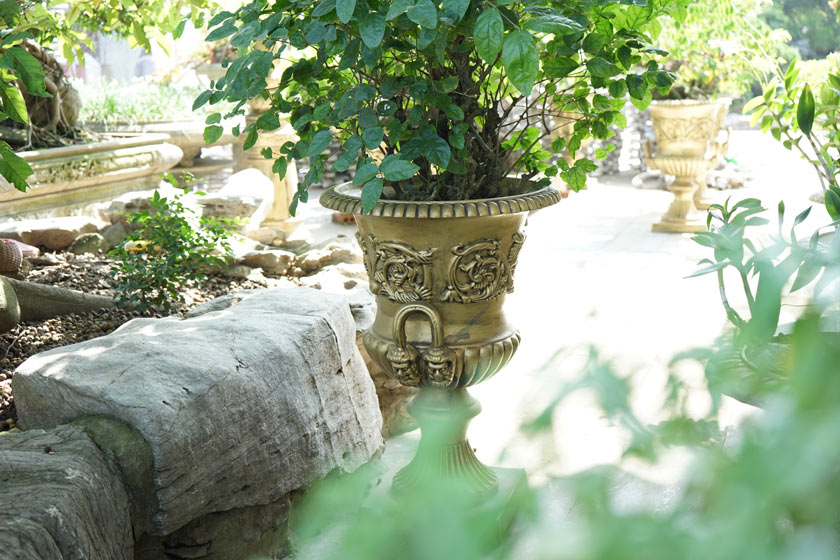An urn planter is definitely the most dramatic piece of decoration item that can uplift the entire design of the garden. But choosing the right one can be quite a struggle since multiple aspects need to be taken into account. Through this article, we will show you some of the attributes that you’d need to consider, and hopefully, it would be helpful for your next purchase.
Recently, container gardening has become a term that everyone knows about. But what caused it to draw so much attention? It’s the decorative urn that does the most work. For some who haven’t known, when they heard of “an urn”, they’d think right away of the cremation one that used to hold cremated remains. However, in gardening, an urn planter is a kind of ornamental container used for cultivating activities, from planting plants, vegetables, holding shrubs to grouping formal plantings. Most importantly, a garden urn planter acts as an absolute focal point that brings sophisticated addition to any landscape. So who doesn’t want to own one, right?
If you love decorating your garden and are looking for the perfect urn planter, here are the things that you’d need to consider!
Plant Selection
Of course, you’d want to plant your favorite plants or flowers in this spectacular urn, but only suitable ones can deliver an optimum thriving and esthetic satisfaction.
But don’t worry! There are plenty of selections.
Check the lastest urn planter trend here!
Nevertheless, first, you may want to define your purpose when growing plants in this container. Do you want the outcome to be purely decorative, entirely edible, or a combination of both? Think about that carefully because your choice of plants will directly impact many of the following factors that we will address below.
To make your decision “no muss, no fuss,” here are some recommendations:
- Geranium: a symbol of happiness and positive emotions, according to most Americans. Because of the suitable height, this plant would look fabulous in a large garden urn. The beautiful round-leaf foliage and the stunning compact blooms of the Geranium can blend perfectly with the urn, making it one of the most iconic garden urn plants.
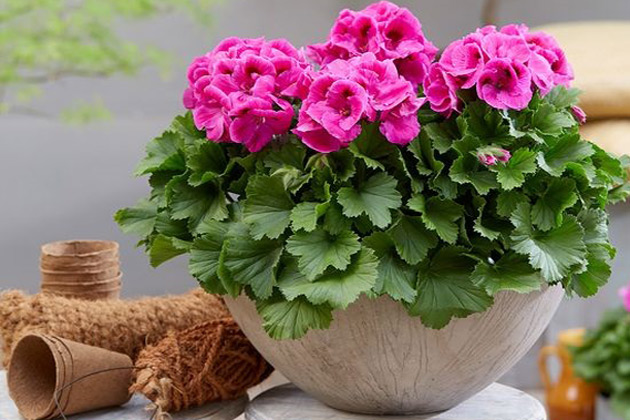
- Impatiens: a charming display of around 1,000 species of flowering plants, with vivid green foliage and colorful flowers that can last throughout the growing season. This plant is born for urn planting because it can fill the entire urn and grow to the size of it.
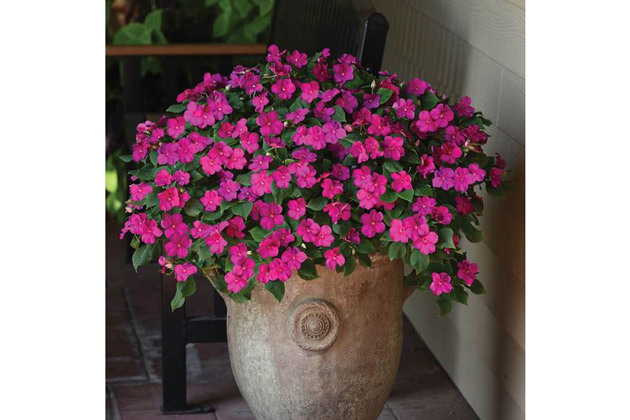
- Coleus: there is no such plant that can give you the brilliant season-long foliage color as the Coleus. Besides, they are probably the easiest plants to grow in the garden because they don’t require much sunlight. With this plant, you can freely choose to plant it alone or with other complementary annuals.

- Daylilies: the perennial plants with brilliant ornamental foliage that adore direct sunlight, require minimal maintenance, and ideal for large urns.
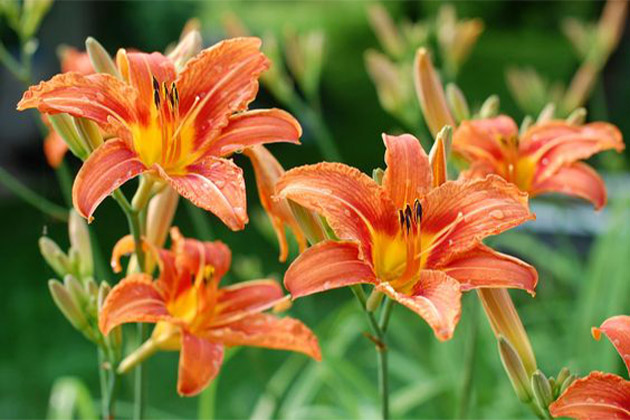
Urn Planter Sizes
Size is another factor that you have to think about. A container must provide enough space for the plant to grow; it can’t be too small or too big for the plant’s size. If it’s too small, the plant will exhibit stunted growth, and its roots will become root-bound since the soil dries more quickly.
On the other hand, if placed in a garden planter that is too large, the plant can be thrown off, and since its root can not reach the bottom of the container, the soil will dry slowly, making your plant more susceptible to root rot.
“So what is the perfect size?”
That’s a good question, and we have just the answer. It is necessary to bear in mind that the size of the garden planter directly relates to the amount of soil a plant requires. And that mainly depends on the type of plant you choose and how deep its root can grow.
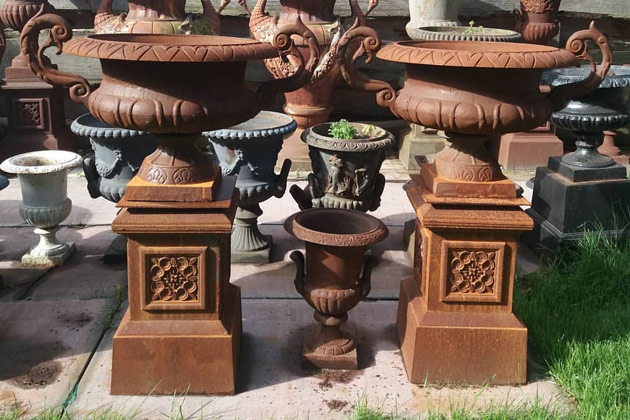
Below is the approximate estimate of a sufficient soil depth that each type of plant would need for healthy growth:
- Ornamental plants:
- Small succulents: <15 centimeters
- Annuals: ~30 centimeters.
- Perennials: 30 – 45 centimeters.
- Shrubs: 45 – 60 centimetres.
- Small trees: 60 – 90 centimeters.
- Edible plants:
- Herbs: ~ 30 inches
- Shallow-rooting crops (lettuces, strawberries, radishes, etc.): 15 – 30 centimeters
- Medium-size (capsicums, eggplants, squashes, melons, corn, etc.): 30 – 45 centimeters.
- Large-size (tomatoes, potatoes, etc.): 45 – 60 centimetres.
- Citrus and fruit trees: 60 to 90 centimeters.
Urn Planter Shapes
Not only the size but the shape of a garden planter can create a huge impact on the development of your plants and the overall landscape.
To help you decide which to buy, here are some common shapes and their favorable types of plant:
- Round, square and rectangular: The medium to large urns that offer deep soil reservoirs would be an excellent choice for perennials, shrubs, and small trees.
- Shallow: If you are looking for a planter for your stonecrop or the other similar small succulents, this low bowl with <15 centimeters of soil depth would be perfect.
- Vase-shaped: offers incredible aesthetics and is designed for mixed combinations of annuals, flowering perennials, and evergreen shrubs or small trees. Plus, it provides a wide range of space for plants to grow and available in multiple sizes.
- Classical-style: a vessel inspiration for annuals and easily removed perennials.
- Tall and upright: though this vertical shape adds an elegant accent to your garden and elevates your plantings, you should be careful choosing the plant. Shallow-rooting plants like succulents are not recommended with this tall container.
Urn planter material
Apart from natural factors such as sunlight or soil moisture, the material of the urn, in addition to its decorative contribution, plays a crucial role in determining whether or not the plant can develop well or not.
And it doesn’t stop there. Each type of plant has its own need for a different planter material. However, compared to edible plants, the ornamental and decorative ones may have fewer material requirements.
Terra-Cotta
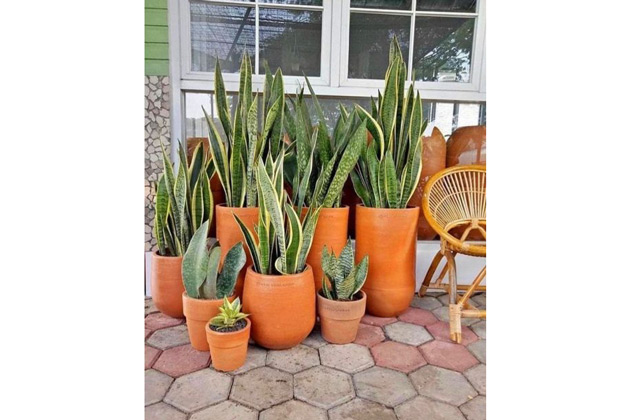
This traditional Terra-Cotta is a budget-friendly option but still derives a warm reddish-brown tone that blends well with almost anything in the garden.
However, there are a few things you need to be aware of this material. First, a Terra-Cotta urn is much more fragile than some other urn options nowadays, and it is more vulnerable to severe weather conditions like extreme coldness. So if you purchase this, make sure you restrict the relocation and store every single one of your Terra-Cotta urn indoors during the winter to avoid destruction.
Second, since Terra-Cotta urns are generally sold unglazed, high permeability is foreseeable. It means that Terra-Cotta planters can quickly lose moisture and soak in moisture from the outside. As a result, you will need to water your plant regularly, or you can apply some of a few tips to retain moisture, such as lining the interior of the pot with plastic to prevent water from escaping, etc.
Ceramic
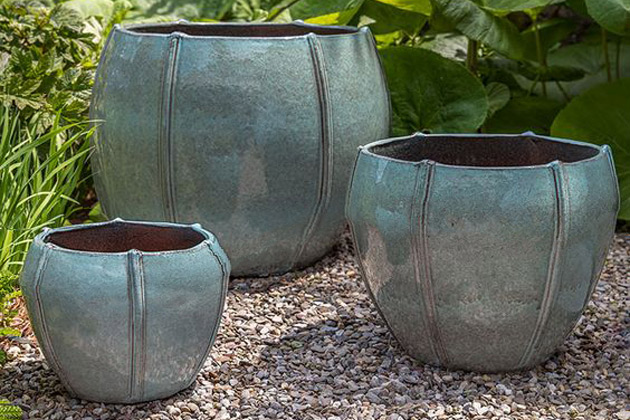
The most exquisite urn planter – Ceramic, or stoneware, is made of high-grade textured, light-colored clay and then glazed. These planters are also treated at high temperatures to reduce porosity and vulnerability. Yet, crack and chip can still happen if they are left outside during freezing conditions.
Though ceramic glazed are the most attractive urn planters, they are likely to be used indoors. The reason is that ceramic urns are relatively expensive and can retain considerable heat, which can kill microorganisms and burn your plants if placed outside during scorching summer days.
Fiberglass
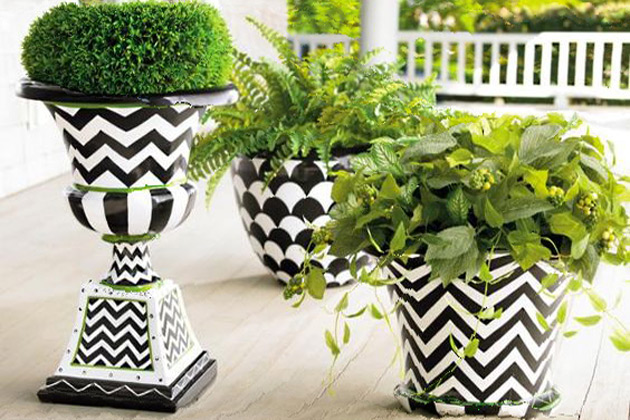
Fiberglass urn planters are a stylish investment for your space that can last for years of beauty.
These planters offer longevity and vibrant sophistication over time and can be ideally positioned indoors and outdoors. Thanks to the proper weather-resistant finish, these urns are able to endure the four seasons and hazardous climates. Not to mention that manufacturers have now successfully produced an automotive-grade coating that helps prevent wear and discoloration from UV rays, rain, snow, and long-term use.
Fiberglass urns appear to be the most costly decision, but their quality and aesthetic appeal are beyond compare. So if you’re willing to make a worthwhile investment in your garden, thriving in these high-end fiberglass urn planters. We can assure you that you are not going to regret it.
Plastic
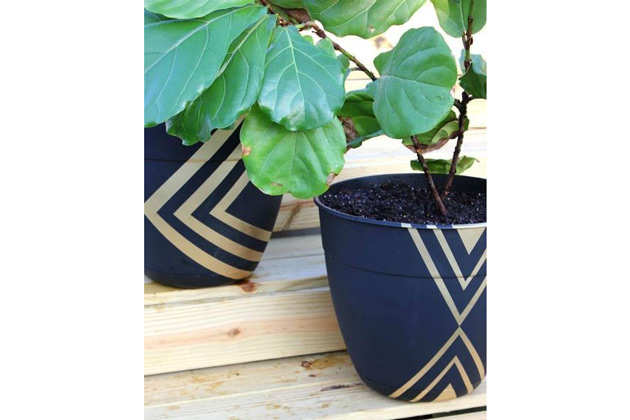
If you went out to buy plants or flowers at any store or nursery, you would notice that they always come with a plastic container. That makes sense as plastic is the cheapest material and is commonly used by commercial growers.
But if you want to grow your plants at home, will they be suitable for you?
Apart from the fact that plastic containers are cheap and come in various sizes, they can be compared with most other materials, from appearance to durability.
If you want an urn that is a heavy, stunning, and garnishing addition to exposes the grandiosity of your garden, then you wouldn’t get much benefit from the plastic ones. Even though plastic can be made resembling concrete or Terra-Cotta, it’s far from a real thing and can not replace the other planters.
Concrete
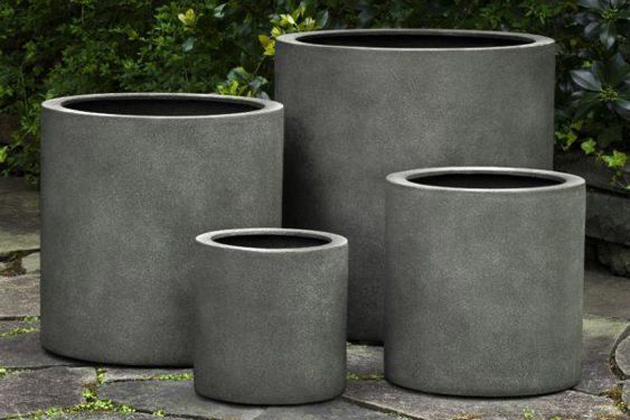
Your sheer-weight plants need ballast protection against the wind? Consider concrete urn planters.
These urns are built to last for decades, and the older they get, the better their visual interest. Also, they come in a wide range of styles and indeed the top selection for a classic look. Another strong point of concrete urns is that they provide superior heat insulation for your plants to grow and flourish.
Unfortunately, due to the material itself, concrete urns are super heavy. They may require a sturdy foundation, and you’d need to choose precisely where you want to put them since relocating could be troublesome due to the massive weight, and if they are accidentally bumped or knocked over, they could break easily.
Metal garden planter
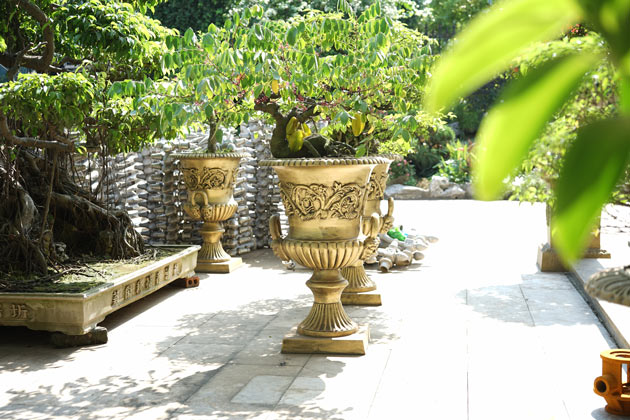
The graceful urn planters with aged patina are once again gaining in popularity. If truth be told, in the consciousness of the majority, these metal urns are the signature of the urn-making industry.
This interesting and aesthetically pleasing plant container can be used marvelously indoors, outdoors, and in any decoration concept. They are heavy, long-lasting, and always on-trend. Creating both contemporary style and antique influence to fit various customer requirements, with a metal urn as the centerpiece, the grandeur of your garden will be effortlessly elevated.
Conclusion
Choosing the right garden planter is a complex and time-consuming procedure that could be pretty overwhelming and daunting. So for the most desirable result, take your time to understand your style, your decorative priorities, and then you’d be able to point out which urn works for your patio.


